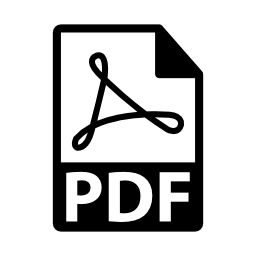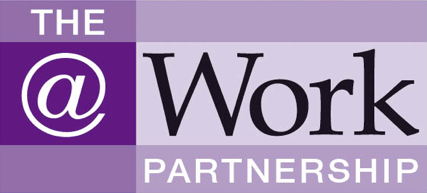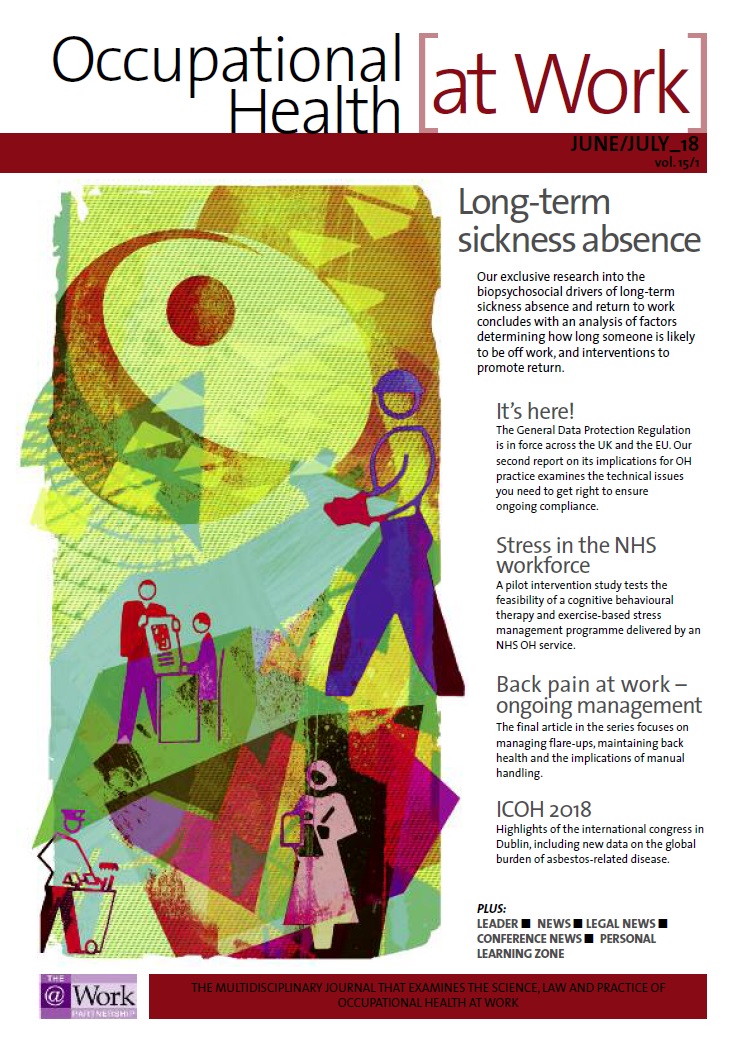June/July 2018 (vol. 15/1)
ContentsFeaturesNewsLegal
NewsResearch DigestResearch PlusCPD
 Personal Learning Zone in this issue
Personal Learning Zone in this issue
Summary:
FEATURED ARTICLES
This issue of Occupational Health [at Work] features a Personal Learning Zone (PLZ) article recommended for continuing professional development (CPD). The assignment questions, ‘Personal learning statement’ and ‘Certificate of engagement’ are available to subscribers at AWPcpd . These will also be stored in your password-protected PLZ. The PLZ will help you document your own CPD. Occupational health physicians and nurses, occupational hygienists and other professionals can use the resource in support of their specialism’s revalidation or CPD requirements..
Pages 30–35. GDPR – the way forward
The EU General Data Protection Regulation came into force on 25 May, but compliance requires ongoing attention to a plethora of issues affecting data security – including both physical measures and cybersecurity. OH services and practitioners will need to assess the data they hold and their information risks, establish a person with day-to-day responsibility for information security, and implement systems to prevent data breaches.
ADDITIONAL CPD
The following articles, news and research items are suggested reading for CPD and professional revalidation. Subscribers can complete their online Personal Learning Zone CPD record at AWPcpd .
Page 06-07. A fully updated standard from the Global Reporting Institute, GRI 403, is expected shortly. It will help organisations analyse and report their OH and safety performance. It will focus on leading and lagging indicators, and take account of modern working practices.
Page 12-14. A High Court ruling in a personal injury case involving a former Royal Opera House musician highlights the importance of adhering to the duties under the Control of Noise at Work Regulations 2005. Although breach of the Regulations no longer gives rise to civil liability (the case relates to incidents before a change in the law) the court held that it was wrong to balance the health and safety of employees with ‘artistic value’. Damages would be awarded for ‘acoustic shock’, a syndrome not previously recognised by the UK courts.
Pages 15-26. Previous surveys of employee sickness absence have tended to focus on headline diagnoses when attributing causation. This extensive biopsychosocial survey of long-term sickness absence looks more deeply, and unpicks the biopsychosocial factors that contribute to the length of absences and the interventions thought likely to promote timely return to work
Pages 36-38. Employees with a history of back pain can find recurrent flare-ups distressing – these incidents can erode confidence and make the individual over-protective and fearful of movements that might exacerbate their condition. Flare-ups are best managed using a biopsychosocial approach, which can help in the recognition of triggers and management of their impact
Author: The At Work Partnership Ltd
Occupational Health at Work June/July 2018 (vol. 15/1) pp43



